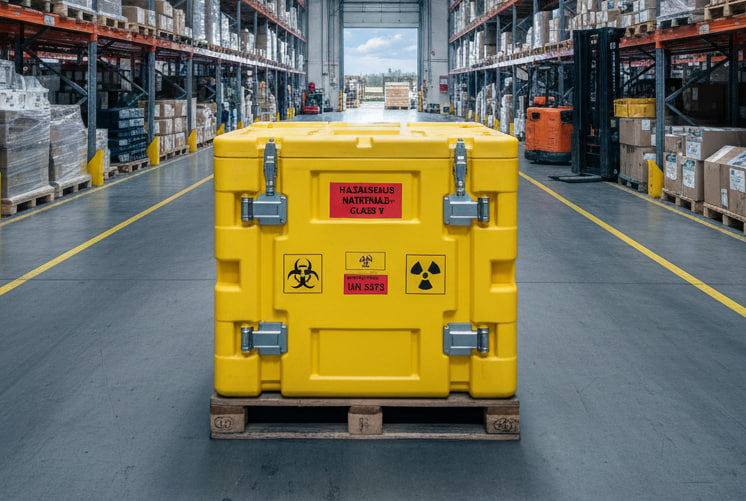Selling on Amazon can be both exciting and overwhelming, especially for new sellers. With a wide range of terms, acronyms, and marketplace jargon, it is easy to feel lost when navigating listings, inventory, and sales metrics. Understanding the key terms is essential not only for avoiding costly mistakes but also for running your business efficiently and maximizing profits.
This guide will walk you through all the essential Amazon terms every seller should know. By the end of this article, you will have a solid grasp of the language of Amazon selling, helping you make smarter decisions and grow your business with confidence.
Selling Basics
SKU (Stock Keeping Unit)
The SKU is a unique identifier assigned to each product to track inventory. It helps differentiate between variations like size, color, or packaging. SKUs are important for inventory management, warehouse organization, and accounting purposes.
ASIN (Amazon Standard Identification Number)
An ASIN is Amazon’s unique identifier for products. Each product on Amazon has a unique ASIN, which helps the platform track inventory, listings, and sales. ASINs are used for product research, inventory management, and listing verification.
Best Seller Rank (BSR)
BSR is a ranking assigned by Amazon to products within each category based on recent sales volume. A lower BSR indicates higher sales relative to other products in the same category. Monitoring BSR helps sellers track product performance and market trends.
FBA (Fulfillment by Amazon)
With FBA, Amazon handles storage, packaging, shipping, and customer service. FBA can save time, improve delivery speed, and increase Buy Box eligibility, but it comes with fees.
FBM (Fulfillment by Merchant)
FBM means the seller handles inventory storage, packing, and shipping. This option allows for greater control over fulfillment and costs but requires more effort and infrastructure.
Business Models
Dropshipping
Dropshipping is a fulfillment method where the seller does not hold inventory. Products are shipped directly from the supplier to the customer.
Private Label
Private Label involves selling products under your own brand, even if they are manufactured by a third party. This allows brand differentiation and higher profit margins.
Online Arbitrage
Online Arbitrage (OA) is a business model where sellers purchase products from online retailers at lower prices and resell them on marketplaces like Amazon for a profit. OA relies on research, price monitoring, and compliance with marketplace rules.
Inventory & Product Management
Listing
A listing is the product page on an online marketplace where the product is displayed for potential buyers. It typically includes the product title, description, images, pricing, and shipping information. Listings are essential for visibility, click-through rate, and sales conversion.
Components of a listing include the product title, images, description, pricing, promotions, and reviews. A well-structured listing helps customers understand the product and make informed purchase decisions.
Buy Box
The Buy Box is the prominent “Add to Cart” button on Amazon product pages. Winning the Buy Box increases sales, and eligibility depends on factors like price, account health, and fulfillment method.
Product Variations
Product variations are different versions of the same product, such as size, color, or style. Variations help organize listings and improve the shopping experience for customers.
Bundling
Bundling refers to selling multiple products together as a single package, increasing average order value and offering unique products.
Multipacks
Multipacks are pre-packaged sets of the same product sold together. This is often used for consumables or items with high repeat demand.
Product Reviews
Product Reviews are ratings and comments left by customers on individual listings. They help future buyers make informed decisions and can influence product visibility and sales. Maintaining positive reviews is key for credibility and trust.
Hazmat / Dangerous Goods
Hazmat or Dangerous Goods are products that contain materials considered hazardous, flammable, toxic, or otherwise regulated for transport and storage. Selling or storing these products requires strict compliance with Amazon’s guidelines and local regulations to ensure safety and avoid penalties.
Pricing & Profit
Profit Margin
Profit margin is the percentage of revenue remaining after all costs have been deducted. It measures how much of each sale contributes to overall profit.
Formula:
Profit Margin = (Profit ÷ Selling Price) × 100
ROI (Return on Investment)
ROI measures the profitability of a specific investment or product. It shows how much value is generated relative to the cost of the investment.
Formula:
ROI(%) = (Profit ÷ Cost) × 100
VAT (Value Added Tax)
VAT is a consumption tax applied to products sold in European countries. Sellers must understand VAT obligations for pricing and compliance when selling across borders.
Amazon Europe Fees
Fulfillment Fees (FBA Fees)
Charged per unit for picking, packing, and shipping your products through Amazon’s fulfillment centers. Varies by product size and weight.
Monthly Storage Fees
Fees for storing inventory in Amazon’s fulfillment centers, calculated based on volume and storage duration.
Long-Term Storage Fees
Extra charges for inventory stored for extended periods to encourage stock rotation and reduce warehouse congestion.
Returns Processing Fee
Applies when a customer returns a product. Covers handling and processing the returned item.
FBA Removal Fees
Charged if you request Amazon to return or dispose of your inventory from their warehouses.
FBA Label Service Fee
Fee for labeling products that Amazon requires for fulfillment, if you don’t label them yourself.
FBA Prep Service Fee
Charges for preparation services such as bubble wrapping, poly bagging, or other product preparations required by Amazon.
Referral Fees
A percentage of the selling price paid to Amazon for using their marketplace, varying by product category.
Closing Fees
Applies to certain product types, mainly media items, as an additional selling cost.
Digital Services Fee
A fee charged by Amazon in certain countries to comply with local regulations on digital marketplaces. It is typically calculated as a percentage of the total sale and is applied on top of standard selling fees.
Account Management & Compliance
Account Health
Account Health measures your overall performance on Amazon. It tracks metrics such as order defect rate, late shipments, cancellation rate, and policy violations. Maintaining good account health is essential to keep selling privileges and qualify for programs like the Buy Box.
Restricted Products
Restricted Products are items that require prior approval from Amazon before you can sell them. This includes high-risk categories, regulated items, or products with legal restrictions. Selling restricted products without approval can lead to account suspension.
Brand Registry
Brand Registry is a program that allows brand owners to protect their intellectual property, control product listings, and access enhanced marketing tools on Amazon. Enrollment helps prevent unauthorized sellers from listing counterfeit or infringing products.
Intellectual Property (IP)
Intellectual Property includes legally protected creations such as trademarks, patents, and copyrights. Respecting IP rules is essential to avoid account suspension, product removal, or legal action. Brand Registry often helps manage and protect IP rights effectively.
Seller Feedback
Seller Feedback reflects the buyer’s experience with you as a seller, not the product itself. It includes ratings and comments on shipping speed, communication, and overall service. Positive seller feedback improves your reputation and affects account health.



